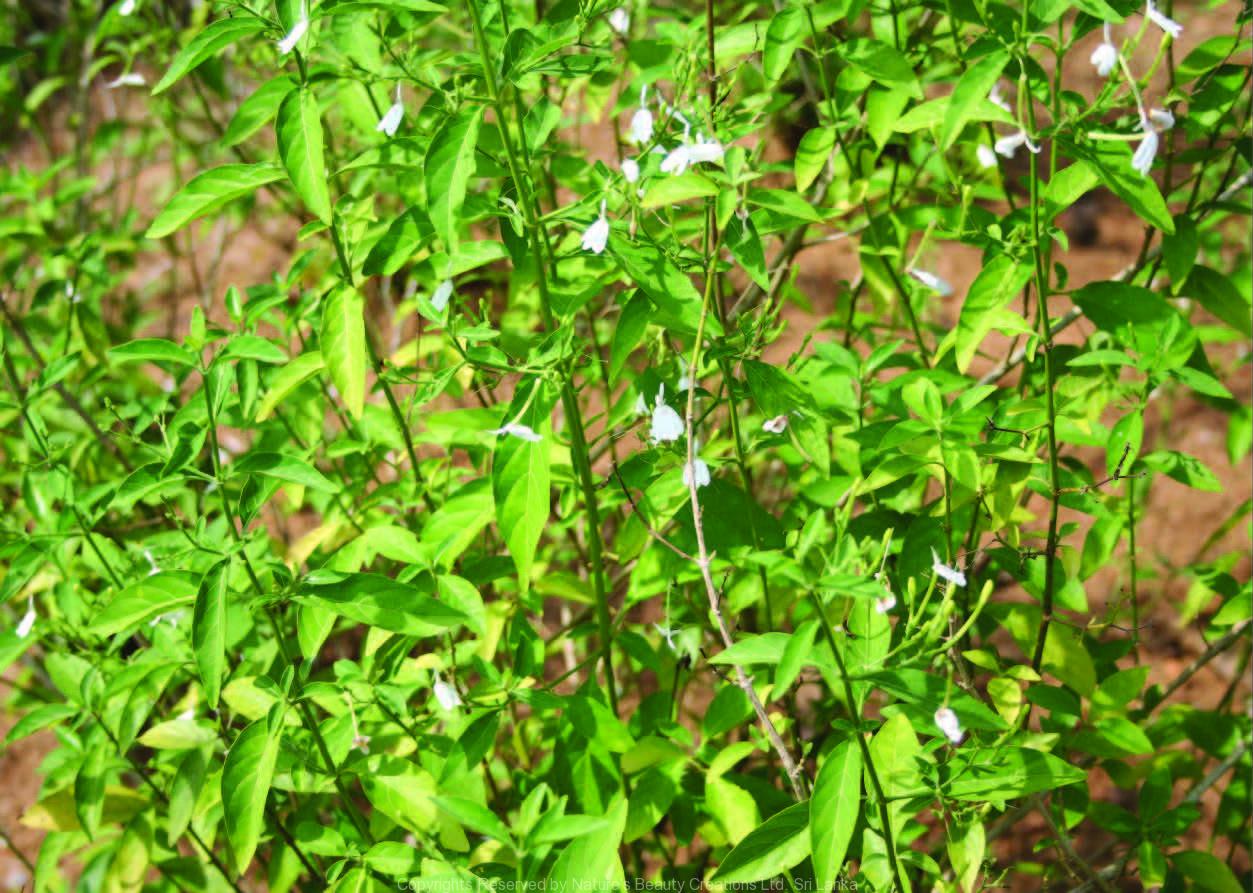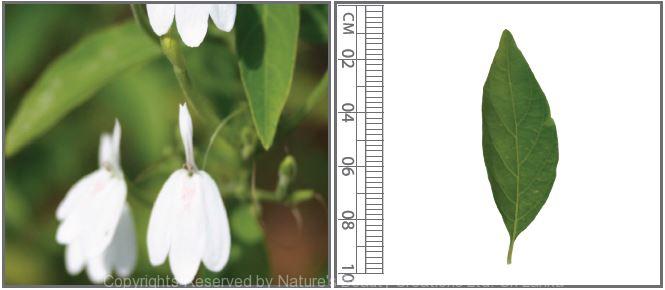

Traditional Knowledge
Useful plant parts :
Root and leaf
Uses in traditional medicine :
- Fresh leaves and roots are crushed with lime and applied locally over lesions and for itching
- Roots are believed to have aphrodisiac properties when boiled with milk
- Roots are considered as an antidote in poisonous snakes bites
Scientific Research
Chemical constituents:
Naphthoquinones: rhinacanthin C, D and Q from roots; lignans: rhinacanthin E and F from aerial parts
Bioactivity :
Aqueous ethanol extract of whole plant: immunomodulating; aqueous ethanol extract of leaves: antifungal, antibacterial; ethanol extract of roots: antiproliferative; rhinacanthins are shown to be cytotoxic and antiosteoclastogenic
Clinical:
References : Brimson, J. M. and Tencomnao, T., (2011), Rhinacanthus nasutus Protects Cultured Neuronal Cells against Hypoxia Induced Cell Death, Molecules, 16, 6322-6338. Gotoh, A. et al., (2004), Antiproliferative Activity of Rhinacanthus nasutus (L.) KURZ Extracts and the Active Moiety: Rhinacanthin C, Biological & Pharmaceutical Bulletin, 27(7), 1070. Horii, H. et al., (2012),Induction of non-apoptotic cell death in human oral squamous cell carcinoma cell lines by Rhinacanthus nasutus extract, In Vivo, 26(2), 305-9. Horii, H. et al., (2013), New biological activities of Rhinacanthins from the root of Rhinacanthus nasutus, Anticancer Res, 33(2), 453-9. Kernan, M. R. et al., (1997), Two New Lignans with Activity against Influenza Virus from the Medicinal Plant Rhinacanthus nasutus, Journal of Natural Products, 60(6), 635-637. Kernan, M. R. et al., (1997), Two New Naphthoquinones with Antiviral Activity from Rhinacanthus nasutus, Journal of Natural Products, 60(6), 635-637. Punturee, K. et al., (2005), Immunomodulatory Activities of Centella asiatica and Rhinacanthus nasutus Extracts, Asian Pacific Journal of Cancer Prevention, 6, 396-400. Satter, M. A. et al., (2004), Evaluation of anti-fungal and anti-bacterial activity of a local plant Rhinacanthus nasutus (L.), Journal of Biological Sciences, 4(4), 498-500. Wu, T. S. et al., (1998), Rhinacanthin-Q, a naphthoquinone from Rhinacanthus nasutus and its biological activity, Phytochemistry, 49(7), 2001-3.
Copyrights Reserved By
Natures Beauty Creations




